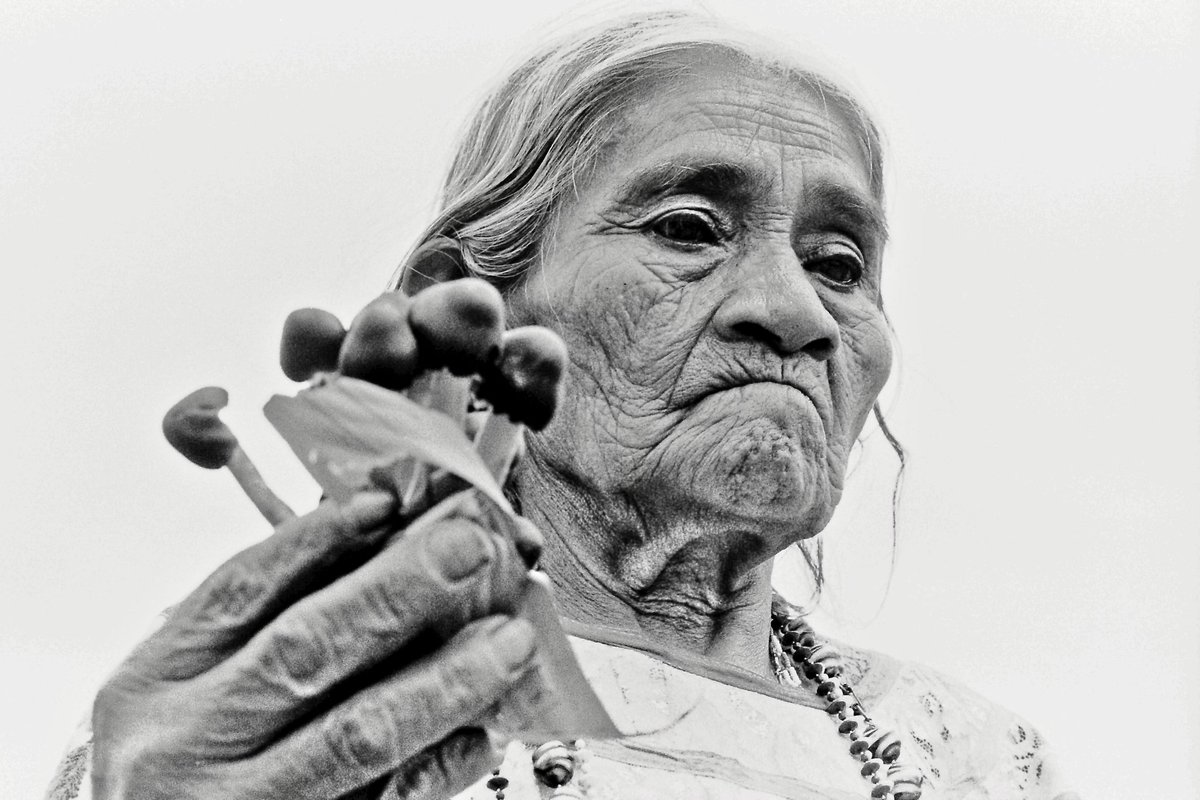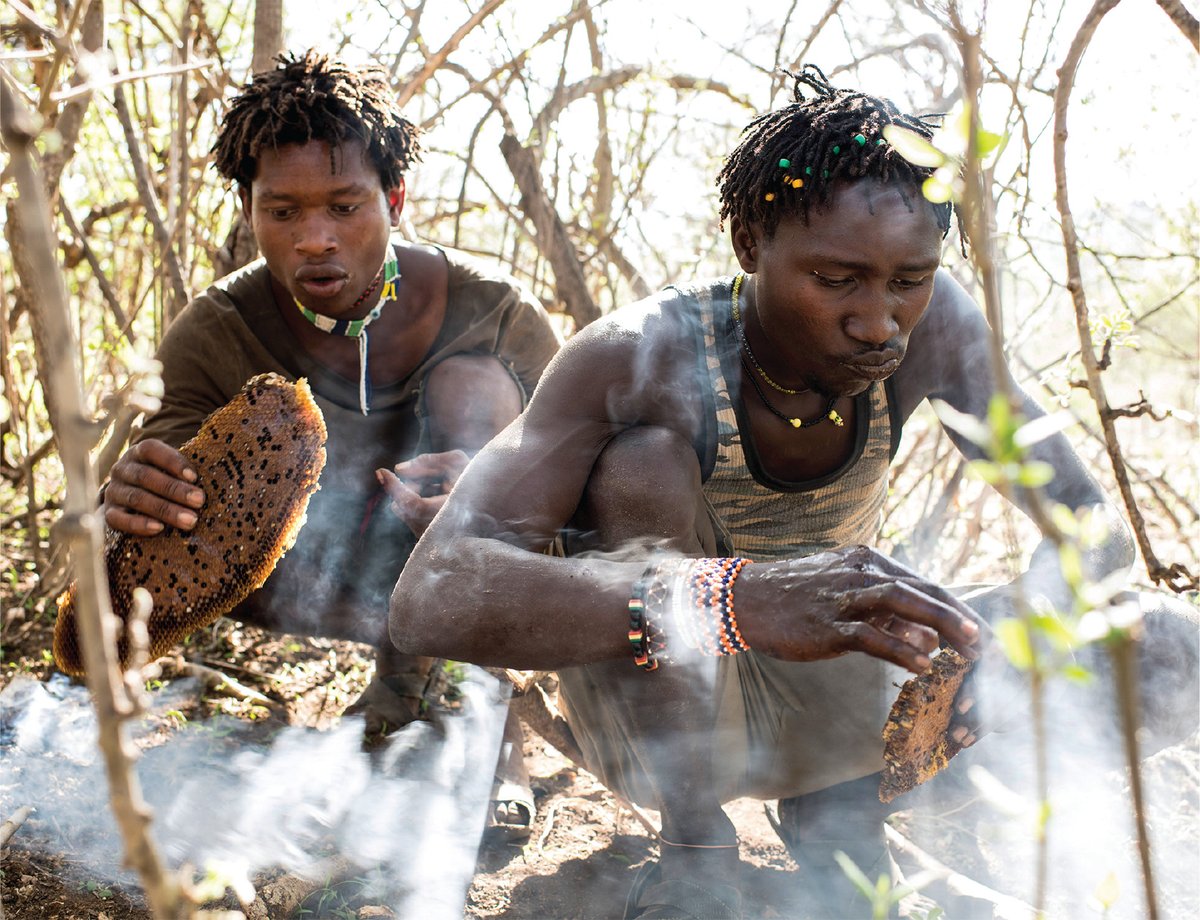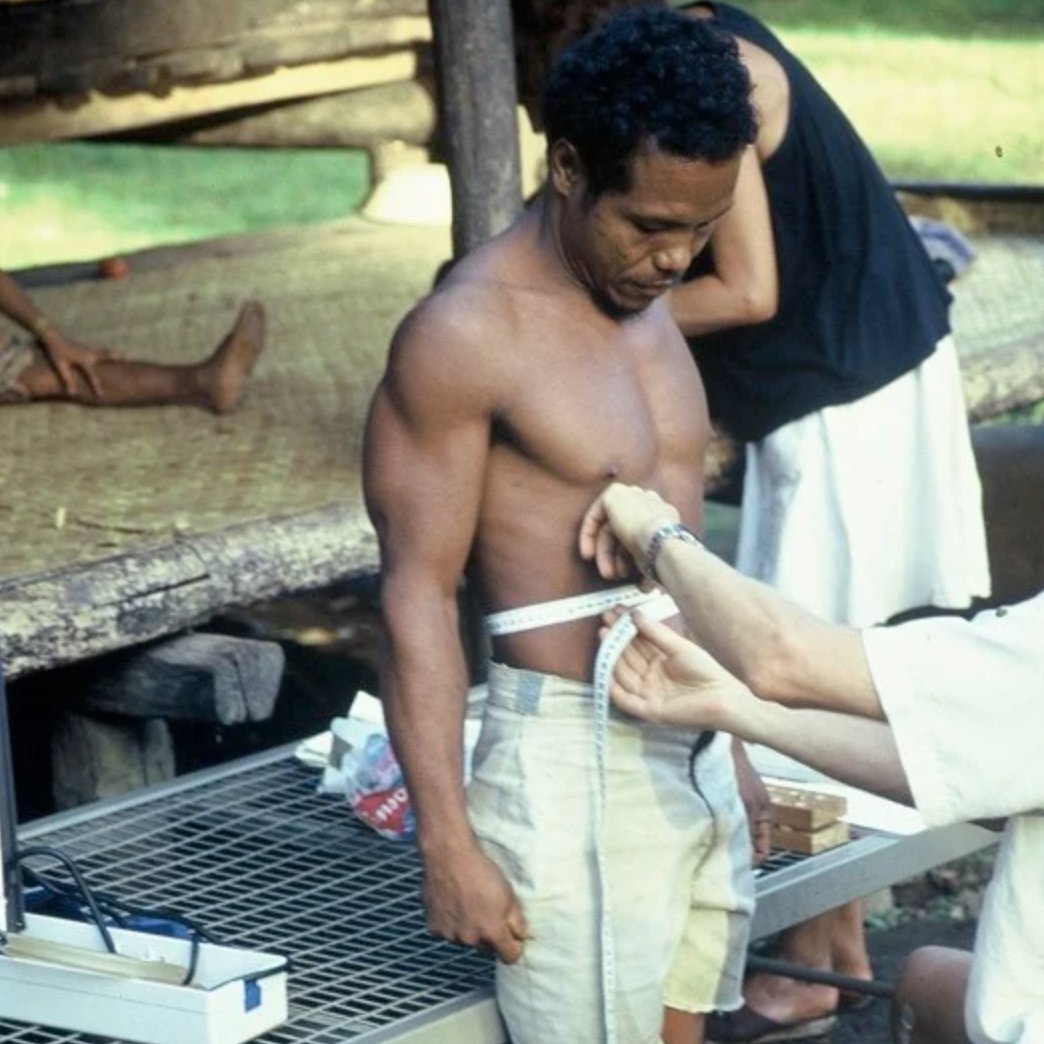
anthropology prof @ucdavis.
phd @harvard.
contributing writer @newyorker.
author of SHAMANISM @aaknopf @penguinrandom.
also at https://t.co/Ve9Dw1mnzx
🧞♂️
3 subscribers
How to get URL link on X (Twitter) App


 Across these videos, you'll see the core features of shamanism. Specialists enter altered states, engage w/ unseen forces, & deliver services like healing & divination. But you'll also see incredible diversity. Shamanism is near universal yet its expressions are endlessly varied.
Across these videos, you'll see the core features of shamanism. Specialists enter altered states, engage w/ unseen forces, & deliver services like healing & divination. But you'll also see incredible diversity. Shamanism is near universal yet its expressions are endlessly varied. 

 Key points:
Key points:

 Our paper is based on >10 years of fieldwork(!) conducted by Hill b/w 1977 & 2020. He's fluent in the Aché language, has amassed thousands of hours of behavioral observation, and has recorded & translated music. But he's never observed the Northern Aché dance or sing to infants.
Our paper is based on >10 years of fieldwork(!) conducted by Hill b/w 1977 & 2020. He's fluent in the Aché language, has amassed thousands of hours of behavioral observation, and has recorded & translated music. But he's never observed the Northern Aché dance or sing to infants. 

 You may have seen this video, which went viral a couple weeks ago. What's great about these guys is not how unusual they are but how they express a cultural amalgam that goes back more than a century.
You may have seen this video, which went viral a couple weeks ago. What's great about these guys is not how unusual they are but how they express a cultural amalgam that goes back more than a century.

 Snowden Jr. focused on the period from ~600 BC to 400 AD. Greeks & Romans were clearly familiar with Black Africans, who they called "Ethiopians". They interacted most with the people of Nubia (then, the Kingdom of Kush, whose capital was Meroë for most of this period).
Snowden Jr. focused on the period from ~600 BC to 400 AD. Greeks & Romans were clearly familiar with Black Africans, who they called "Ethiopians". They interacted most with the people of Nubia (then, the Kingdom of Kush, whose capital was Meroë for most of this period). 

 1. The Inuit lifestyle is relatively new. Human migrations into the Arctic occurred just a couple thousand years ago. If the idea is to return to an ancestral diet, they are arguably a less appropriate model than early agricultural populations who lived thousands of years before.
1. The Inuit lifestyle is relatively new. Human migrations into the Arctic occurred just a couple thousand years ago. If the idea is to return to an ancestral diet, they are arguably a less appropriate model than early agricultural populations who lived thousands of years before. 



 To start: People often talk about a Mayan "collapse" in 900 CE. Yet Mayan civilization lived on. Yes, cities in the Southern Lowlands (see map) were abandoned, but other Mayan states prospered, especially in the Northern Lowlands (the Yucatan Peninsula).
To start: People often talk about a Mayan "collapse" in 900 CE. Yet Mayan civilization lived on. Yes, cities in the Southern Lowlands (see map) were abandoned, but other Mayan states prospered, especially in the Northern Lowlands (the Yucatan Peninsula). 

 You’re probably familiar w/ the standard story: The Aztecs believed that the feathered serpent, Quetzalcoatl, was destined to return from the east on a certain date. When the conquistador Hernán Cortés pulled up, they mistook him for the deity, making them easier to conquer.
You’re probably familiar w/ the standard story: The Aztecs believed that the feathered serpent, Quetzalcoatl, was destined to return from the east on a certain date. When the conquistador Hernán Cortés pulled up, they mistook him for the deity, making them easier to conquer. 


 In thinking about effects, the 2 most important dimensions are:
In thinking about effects, the 2 most important dimensions are:

https://mobile.twitter.com/mnvrsngh/status/1371466783035564036Like @DavidGraeber & @DavidWengrow, we argue that the classic story (small, mobile, egalitarian bands before agriculture) needs a facelift. We point to some similar evidence (e.g., social flexibility & diversity among Holocene hunter-gatherers). Yet there are 4 major differences:


 Sahlins relied mostly on data from two populations: Aboriginal Australians & the Kalahari !Kung.
Sahlins relied mostly on data from two populations: Aboriginal Australians & the Kalahari !Kung.

 We visited 3 communities: the Piaroa, Jiw, & Eastern Tukano. All of them use the psychedelic snuff yopo, which contains bufotenin (found in certain toads), DMT, & 5-MeO-DMT, often taking it with caapi/yagé (contains MAOIs). This picture shows yopo snuff w/ a bird-bone inhaler.
We visited 3 communities: the Piaroa, Jiw, & Eastern Tukano. All of them use the psychedelic snuff yopo, which contains bufotenin (found in certain toads), DMT, & 5-MeO-DMT, often taking it with caapi/yagé (contains MAOIs). This picture shows yopo snuff w/ a bird-bone inhaler. 

 1. Kitavans of Trobriand Islands (Papua New Guinea)
1. Kitavans of Trobriand Islands (Papua New Guinea)

 Background: The anthropologists (e.g., Bob Bailey, pictured) visited random people during waking hours & recorded what they were doing, building a representative sample of time use. Most of these data were collected while an anthropologist lived with the community for a year+.
Background: The anthropologists (e.g., Bob Bailey, pictured) visited random people during waking hours & recorded what they were doing, building a representative sample of time use. Most of these data were collected while an anthropologist lived with the community for a year+. 

 Bes was unlike other Egyptian deities. Part-lion & part-human, he was squat, rotund, & bow-legged. While Egyptian gods were normally shown in profile, Bes appeared in full-frontal portrait, often with his genitals dangling.
Bes was unlike other Egyptian deities. Part-lion & part-human, he was squat, rotund, & bow-legged. While Egyptian gods were normally shown in profile, Bes appeared in full-frontal portrait, often with his genitals dangling. 

 Leading Romans, especially in the 2nd & 3rd centuries AD, saw imprisonment as inhumane. The emperor Antoninus (86-161 AD) said the “penalty can be scarcely imposed [even] on a person of servile condition.” Hadrian (117-138 AD) forbade life imprisonment by provincial governors.
Leading Romans, especially in the 2nd & 3rd centuries AD, saw imprisonment as inhumane. The emperor Antoninus (86-161 AD) said the “penalty can be scarcely imposed [even] on a person of servile condition.” Hadrian (117-138 AD) forbade life imprisonment by provincial governors. 


 Ranging in length from 4.5 cm (~2 inches) to 1.4 meters (~5 feet), message sticks were used by indigenous Australians for long-distance communication. A person carved a “stick”, reviewed the message with a messenger, & had the messenger deliver it to someone in a distant group.
Ranging in length from 4.5 cm (~2 inches) to 1.4 meters (~5 feet), message sticks were used by indigenous Australians for long-distance communication. A person carved a “stick”, reviewed the message with a messenger, & had the messenger deliver it to someone in a distant group. 

 <100 km from the Aztec capital Tenochtitlán, Tlaxcallan successfully fought off repeated attempts at subjugation. When the Spanish arrived, it was one of the last remaining autonomous polities in Central Mexico & was surrounded by Aztec-conquered territory. (Map @AztecEmpire1520)
<100 km from the Aztec capital Tenochtitlán, Tlaxcallan successfully fought off repeated attempts at subjugation. When the Spanish arrived, it was one of the last remaining autonomous polities in Central Mexico & was surrounded by Aztec-conquered territory. (Map @AztecEmpire1520) 

 We know about the ganas & sanghas from many texts, including the Vedas, ancient Buddhist texts & observations of Greek writers like Diodorus Siculus. Evidence of Indian republics goes back to the Vedic period, although they proliferated in northern India b/w 600 BC & 200 AD.
We know about the ganas & sanghas from many texts, including the Vedas, ancient Buddhist texts & observations of Greek writers like Diodorus Siculus. Evidence of Indian republics goes back to the Vedic period, although they proliferated in northern India b/w 600 BC & 200 AD. 


 For background: The Harappan (or Indus Valley) Civilization stretched from modern-day Afghanistan to NW India. Its “mature” period lasted from ~2600–1900 BC. With a population in the millions, its technologies (e.g., writing, metallurgy) rivaled those of Mesopotamia & Egypt.
For background: The Harappan (or Indus Valley) Civilization stretched from modern-day Afghanistan to NW India. Its “mature” period lasted from ~2600–1900 BC. With a population in the millions, its technologies (e.g., writing, metallurgy) rivaled those of Mesopotamia & Egypt. 